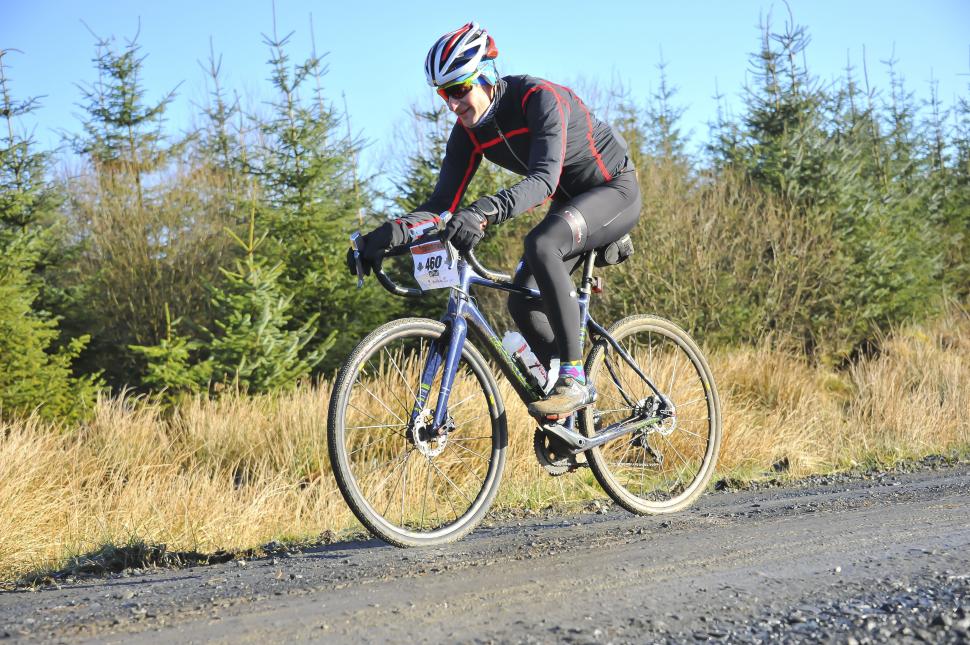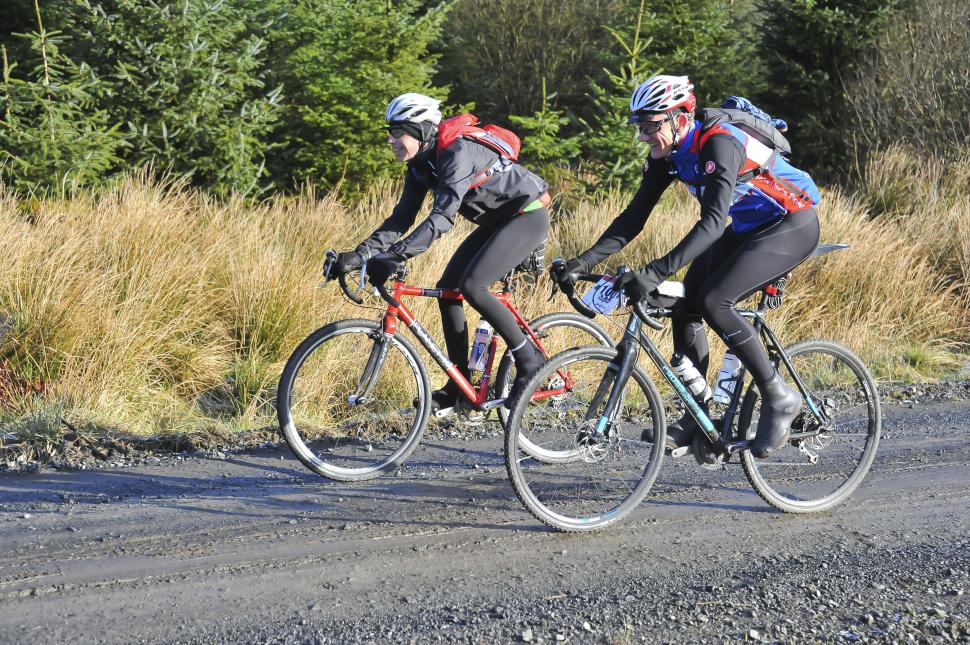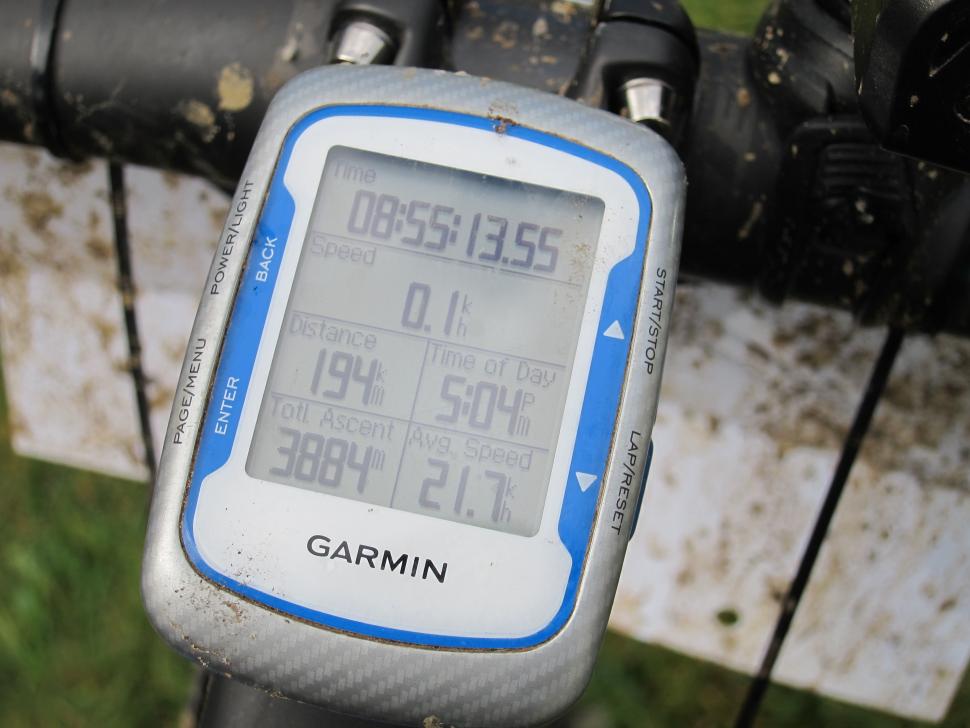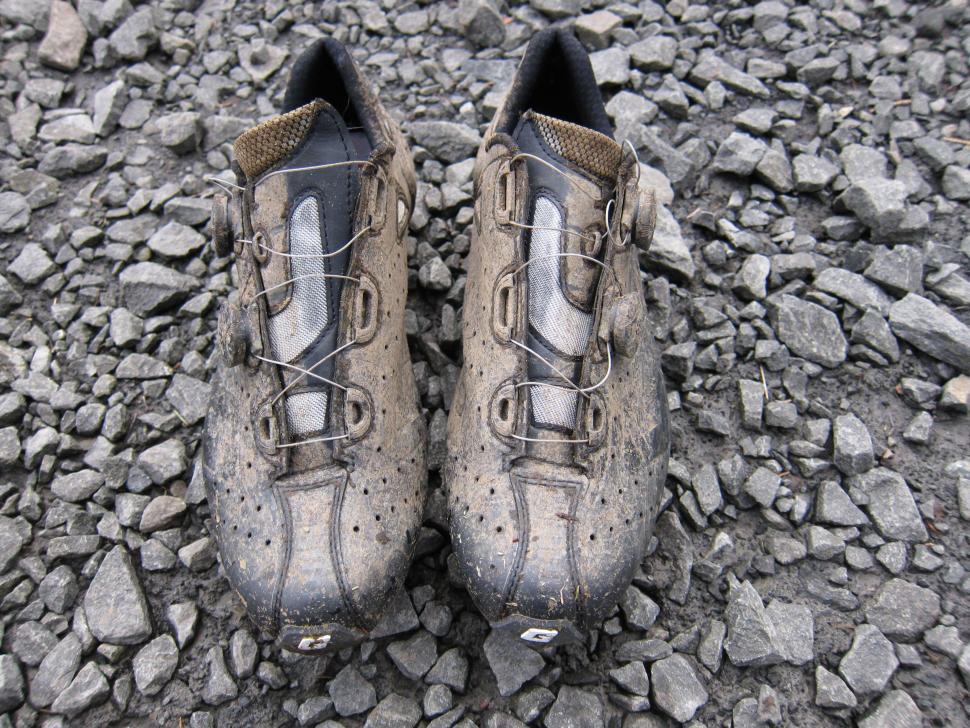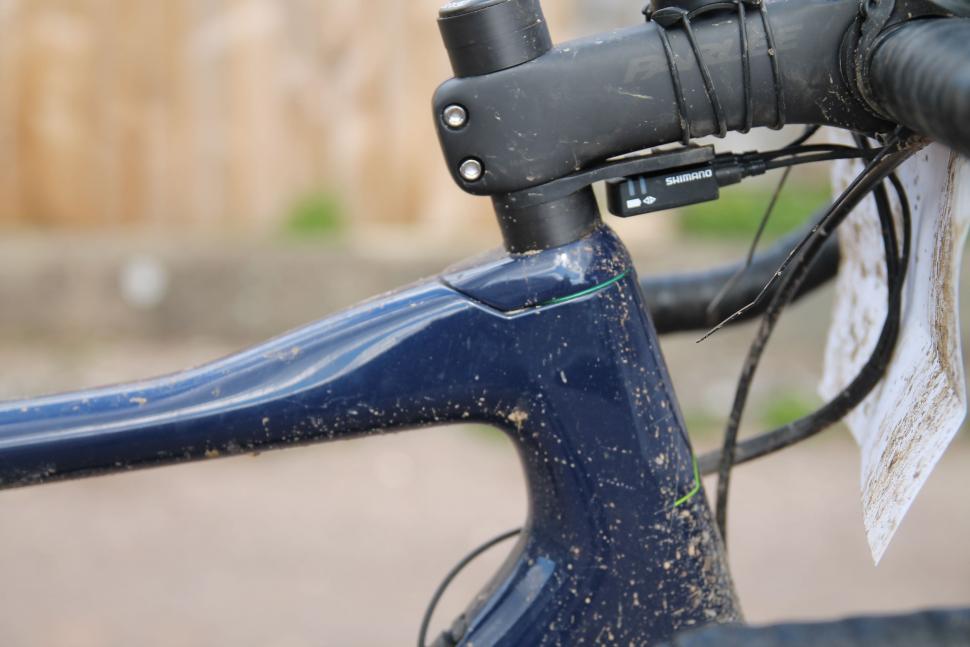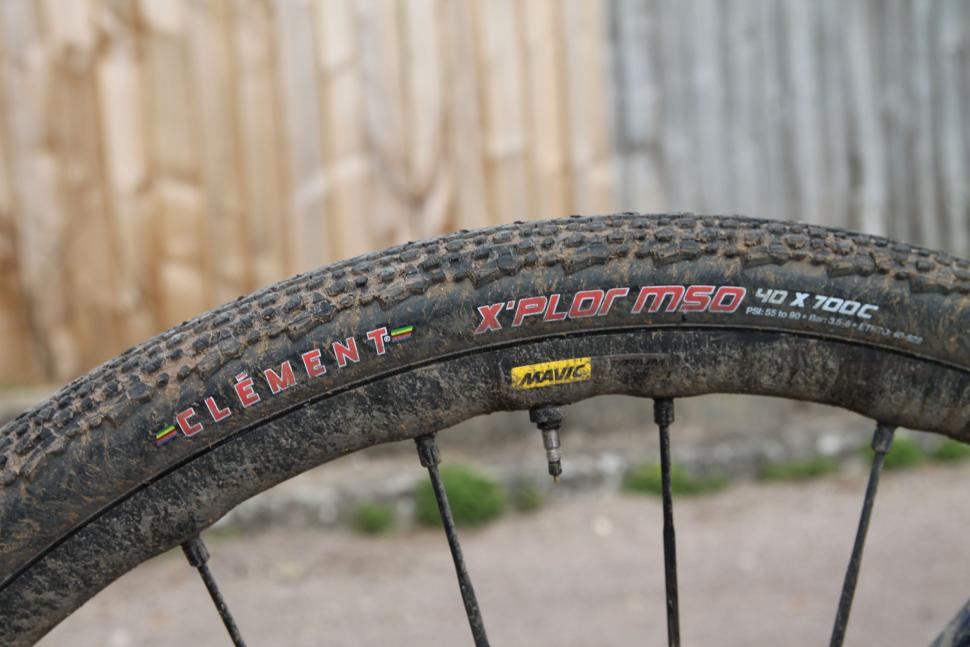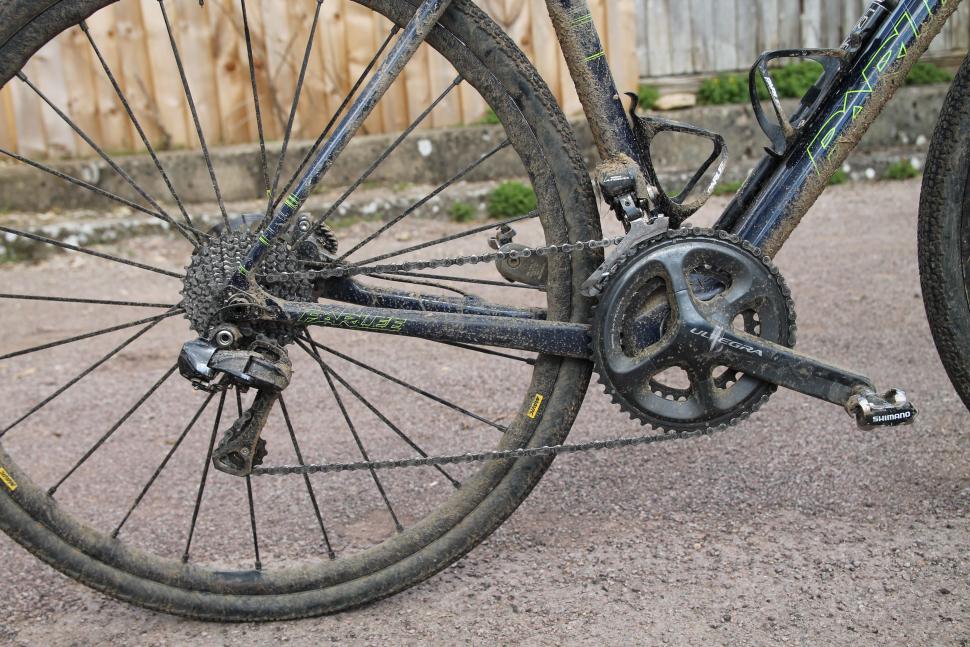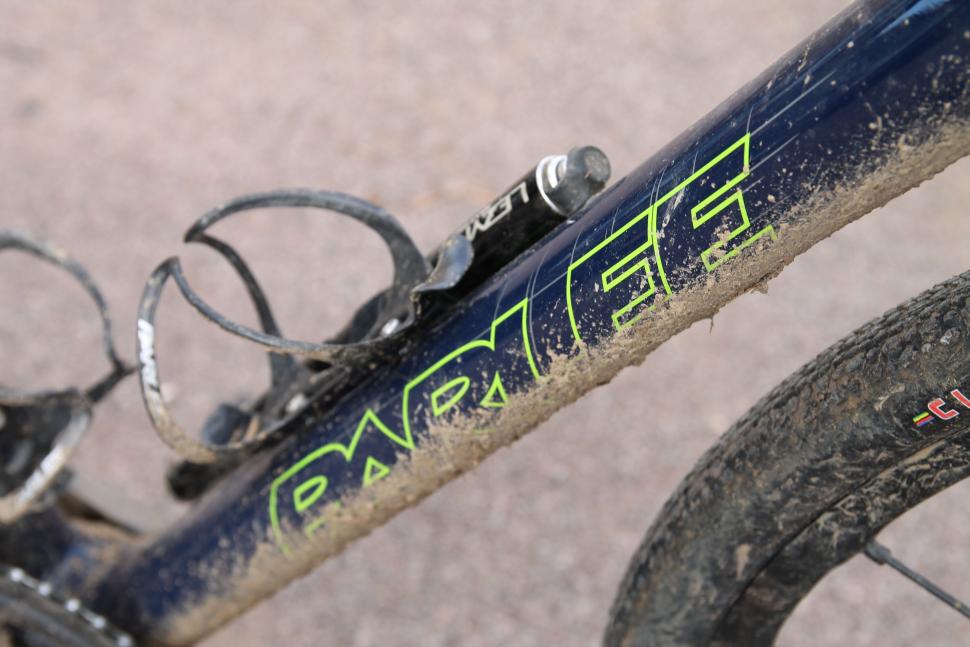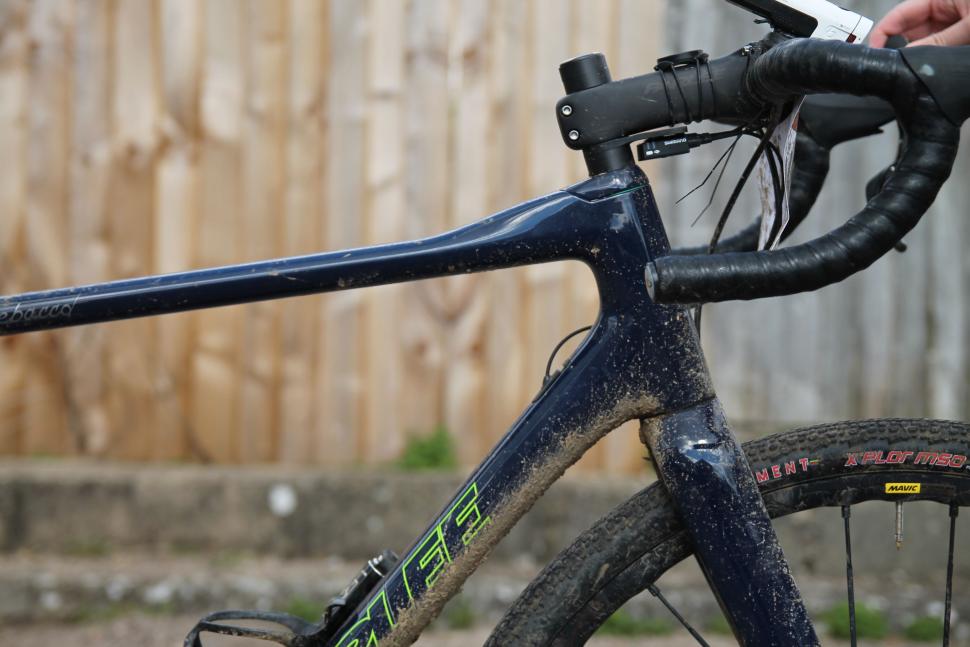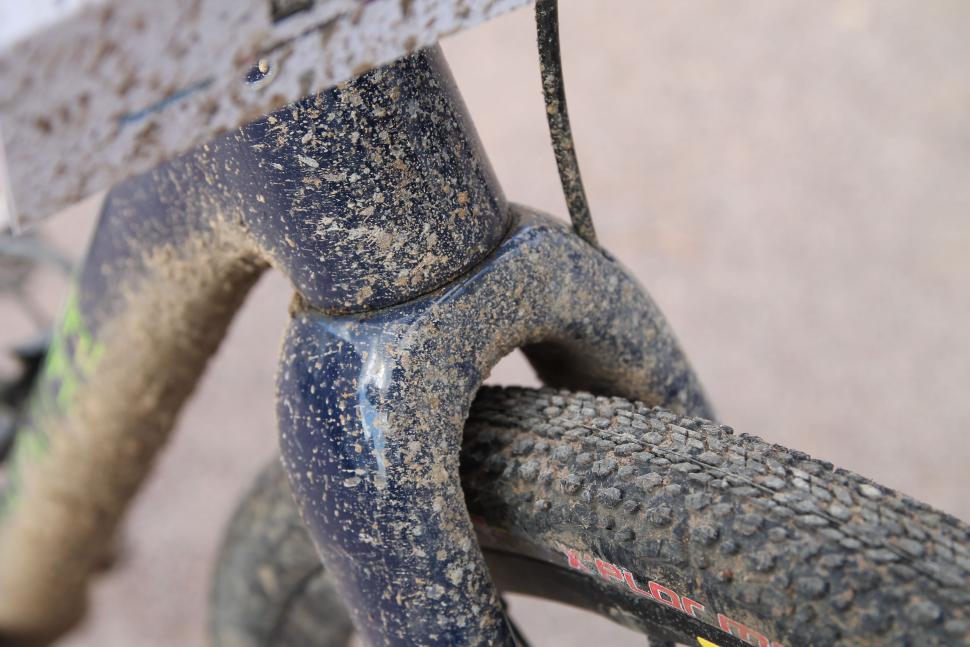- News
- Reviews
- Bikes
- Components
- Bar tape & grips
- Bottom brackets
- Brake & gear cables
- Brake & STI levers
- Brake pads & spares
- Brakes
- Cassettes & freewheels
- Chains
- Chainsets & chainrings
- Derailleurs - front
- Derailleurs - rear
- Forks
- Gear levers & shifters
- Groupsets
- Handlebars & extensions
- Headsets
- Hubs
- Inner tubes
- Pedals
- Quick releases & skewers
- Saddles
- Seatposts
- Stems
- Wheels
- Tyres
- Tubeless valves
- Accessories
- Accessories - misc
- Computer mounts
- Bags
- Bar ends
- Bike bags & cases
- Bottle cages
- Bottles
- Cameras
- Car racks
- Child seats
- Computers
- Glasses
- GPS units
- Helmets
- Lights - front
- Lights - rear
- Lights - sets
- Locks
- Mirrors
- Mudguards
- Racks
- Pumps & CO2 inflators
- Puncture kits
- Reflectives
- Smart watches
- Stands and racks
- Trailers
- Clothing
- Health, fitness and nutrition
- Tools and workshop
- Miscellaneous
- Buyers Guides
- Features
- Forum
- Recommends
- Podcast
OPINION
Surviving the Dirty Reiver 200km gravel race + Parlee Chebacco first ride
Run entirely on gravel roads and dirt tracks at a time of year that would guarantee some challenging weather, the inaugural Dirty Reiver 200 gravel race* pushed competitors to their limits and, in many cases, beyond, over a 200km route packed with strenuous climbs and breathtaking views in the Kielder Forest in Northumberland.
Gravel racing has become hugely popular in the US. The Dirty Kanza 200, the event that inspired Dirty Reiver organiser Paul Errington to try and emulate it in the UK, draws close to 2,000 competitors and has been going since 2006. Where the US leads, others inevitably follow, and gravel events are starting to spring up across the UK.
-Related: Dirty Reiver 200 – A lesson in hurt
The inaugural Dirty Reiver 200 attempted to mimic the format of the Dirty Kanza 200, which is a solo, largely self-supported, long-distance non-stop race over gravel and dirt rides on cyclocross and gravel bikes. Demand was high for the Dirty Reiver, the nearly 500 places selling out extremely quickly, despite very little promotion or press coverage.
We all know the UK doesn’t boast the same expanse of gravel roads as the US, but undeterred, the Dirty Reiver team found Kielder Forest to be the ideal venue for hosting a long-distance gravel challenge. A large network of gravel roads crisscrosses a forest that covers 250 square miles, and its remote location, flanked by the Cheviot hills to the north-east and highest altitude of 620m (Peel Fell) provided a suitably grand backdrop, as well as a demanding route: 200km with nearly 4,000m of climbing to be precise. Along with an essentials list for each starter that included a survival blanket, whistle, lights and enough food for the distance, none of the starters was under any illusion that it would be a walk in the park.
The day of the Dirty Reiver 200. 4.30am and the alarm goes off. Cold croissants for breakfast. It’s still dark outside, the car is frozen over and it starts snowing on the short drive to the start at Kielder Castle. It just adds to the uncertainty of how many layers to wear for what will be a long day in the saddle with weather that could turn in any direction. Not only that, second thoughts of taking part are definitely on the mind.
Lined up on the start, huddled over the handlebars struggling to stay warm, pockets stuffed with food and, hopefully, enough layers of clothing to keep me warm and dry, I’m pondering my decision to drive all this way to take part. But my spirits are lifted as the clouds pull back to reveal a vibrant sunrise - the weather is improving and the talk is a good forecast for the day, which looked in the days leading up to the event to be pretty bleak.
We set off in small staggered groups, a smart idea to help the large group filter through the narrow gates of the castle and out onto the course in the forest beyond. Slick tarmac soon gives way to gravel roads and we won’t encounter any smooth roads for a long time again. Our first taste of gravel. Almost immediately, the gravel track begins a long steady ascent through the forest. The template is set for the day.
This long first climb set the precedent for the day. There were many, many long and arduous climbs throughout the 200km route. While the gradient was never extreme, the combination of a strong wind and rough surface made progress slow and sometimes tedious. Fortunately, what goes up must come down. There were some seriously rapid descents that, on a bike with 40mm tyres, were frightening at times. Huge fun but care had to be taken when trying to overtake slower riders as the centre of the road was treacherously covered with piles of deep gravel. Thank goodness for hydraulic disc brakes to effortlessly control speed through the corners.
Anyone that has mountain biked in a Forestry Commission trail centre will be familiar with the sort of forest road (or fireroads as they’re often called) that the route is primarily based on. Primarily access roads for logging equipment and trucks, these roads crisscross the forest and aren’t exactly smooth, with a washboard surface caused by heavy trucks and loose gravel swept into the middle and verges, making it bumpy on the smoothest line and treacherous if you stray off it.
The Forestry Commission actually has a specification for these roads. They must be 3.4m wide, wider on the bends, have a maximum gradient of 8% but gradients up to 10% are acceptable, cambered with 5% falls from the crown and “shall fit into the landscape and be constructed to a uniform horizontal and longitudinal profile.”
Despite this template, I was surprised at the variety of tracks the organisers had knitted together. Some roads were brand new and deeply covered with chunky gravel, a nightmare to ride at speed. Many were well worn and fast going, but with a relentless rippled washboard surface. There were narrow waterlogged jeep tracks that scrambled through dense woodland, narrow muddy tracks and some extremely rough and churned up rocky tracks that made the going slow and painful. The variety of surfaces added to the challenge and really tested tyre choice. No surprises that there were a lot of punctures, a tubeless setup is highly recommended.
Relief from the climbs and the constant headwind that seemed to accompany each ascent came with the three feed stations dotted along the route at welcome intervals. Tables are heavily laden with all sorts of delights for hungry and fatigued cyclists. I gorge on a bowl of Jaffa Cakes before moving onto jam sandwiches, fresh flapjack still warm from the oven, washed down with an energy gel and water bottles replenished with energy drink. Dragging myself away from the comfort of these food stops, especially the Alp Kit teepee with its roaring open fire (handily used to dry shoes after a dunking in a river crossing a few miles previously) wasn’t easy but I heroically pushed on.
On to another climb. And back into the wind that had by now become a constant presence. Toiling away at a gradient just steep enough to tempt you into pushing a reasonable gear, but sufficient to prevent swift progress to the summit, it was hard going. By the end of the day, my heart would sink with every sight of a hill. The lowest gear would automatically be selected, and I’d settle in for the slog. I’m sure I wasn’t alone in wishing for even lower gears, a smooth strip of tarmac road surface or even a motor to make the going less strenuous.
Relying on experience, rather than fitness, I use a pacing strategy of taking it easy on the climbs to conserve energy, and use the descents and flat roads to try and lift my average speed. Easier said than done. The flats offered little respite as the wind direction appeared to be changing to ensure my constant struggle. I’m determined to complete the 200km route and not resort to the 130km option that will be forced upon riders that don’t make the necessary cutoff before a predetermined time limit.
Despite the pain and building fatigue, it’s a stunning day out, with a sense of escapism that is so rare on this small island. The UK may be a small country, but within the Kielder Forest on this day there was a sense of remoteness and isolation that is a stark contrast to modern life with all its distractions and interruptions. There was no mobile phone reception out here, so Instagramming the ride was out. I know!
Passing through the odd farmyard or crossing a country lane provided the only sense of civilisation. No towns, shops, pubs, no people out walking, no crowds to cheer us on. For large periods of time I was riding alone, with no sight of another rider as far as the eye could see. And this was brilliant. Kielder is a beautiful place, dense woodland flanked by snow-capped hills in the distance, a huge sky, it’s a very dramatic place to ride.
And then, 9 hours 27 minutes after I started, I crumble over the finish line. Relief in finishing has never felt so good or as satisfying. Suffering has never felt so prolonged. Few events I’ve done have tested my fortitude, patience and stamina quite as much as the Dirty Reiver 200 did. There’s no glory through suffering, I discover, but there is happiness in the knowledge that the suffering has finished.
Was it fun and did I enjoy it? Questions I’ve fielded since finishing the Dirty Reiver 200, and to be honest, I’ve not yet been able to find an answer. At times the riding was immense; fast sweeping gravel tracks on a gravel bike is blindingly good fun, fast and furious and electrifying. The demanding course took its toll on my mind and body though, nothing to blame but my lack of preparation and fitness, but finishing such a tough course brought an immense reward and satisfaction. Will I be back next year? Most likely, yes.
I’d like to add that event was brilliantly organised. The regular and clear route signage, the ample feed stops, the free food and drink at the finish, a free inner tube replacement facility on the course (swap a punctured tube for a new one, thanks Panaracer), a cool finishers patch, all added to the experience and value for money. These aren’t reasons for doing the event, but they’re nice attention to details. But it’s the course that really defines this event, so awe-inspiring and brutal in equal measure, Gravel racing has truly arrived in the UK.
A bike for fit for gravel: Parlee’s new Chebacco
Gravel racing has become so popular in the US that many bike manufacturers have responded by developing bikes tailored specifically towards the demands of riding and racing on gravel tracks over very long distances. Generally, a cyclocross bike might be the starting point and then evolved from there, borrowing details from endurance bikes, with slacker angles and longer measurements to provide stability and comfort, disc brakes for control and big tyres for grip.
Related: What bike for the Dirty Reiver 200km race?
In the US events like the Dirty Kanza 200 are described as gravel road endurance cycling challenges, and the emphasis is on using cyclocross and gravel bikes. Even though a lightweight full-suspension mountain bike might seem a natural choice, it isn’t in the spirit of the event. There’s nothing to stop you rocking up on such a bike, though, and many used mountain bikes in the inaugural Dirty Reiver 200.
So bike and tyre choice were biggest talking points on social media among excited competitors in the run up to the event. For many, a cyclocross bike, another discipline of cycle sport that has enjoyed a surge of interest in recent years, was the preferred choice. With bigger volume tyres and an aggressive tread pattern, the cyclocross bike should cope with whatever the unknown course would throw up for the riders. There were a smattering of new age gravel bikes - Cannondale Slate, GT Grade, Salsa Warbird etc - and a decent spread of mountain bikes.
I was fortunate enough to arrange the brand new Parlee Chebacco in time for the Dirty Reiver 200, the US company’s brand new road/adventure bike designed to be able to turn its hand to road riding, cyclocross and gravel challenges. It's a road bike with bigger tyre clearance, essentially. In case you're wondering, the name comes from Chebacco Parish near where the company is based in Massachusetts. So now you know.
The Chebacco is intended to be a versatile and adaptable road bike. To that end, there are thru-axles front and rear, with a modular rear dropout system so any current axle standard can be used. There are disc brakes, naturally, and all cables and hoses are internally routed. There are mudguard mounts, with space for up to 40mm tyres with ‘guards fitted, and 45mm without.
Parlee Marketing Manager Tom Rodi explains a little more about the design direction of the Chebacco:
“The biggest thing we were trying to bring to the bike was a road bike feel, so a lot of that had to do with the tuning in the main triangle. We really tried to tune so it would feel good with a gravel or cyclocross tyre, but also feel good with a 23mm tyre at 100psi,” he says.
"There’s no drawback when you're riding on the road or gravel. If anything, you still want that additional comfort. People are really getting into endurance riding the US, so adding some compliance into it, mimicking more a road bike than say a mountain bike, and there’s where a lot of cyclocross bikes have come from historically."
The bike turned out to be absolutely ideal for the event. The 40mm Clement X’PLOR MSO tyres provided, at about 35psi, plenty of cushioning from the rough forest roads, while the tread pattern offered enough grip on the loose gravel and mud. It’s a tyre designed to be able to bridge the gap between road and gravel, and it coped with the range of surfaces the route threw up.
An Ultegra Di2 groupset proved faultless throughout the ride, not a single miss-shift or dropped chain, with a good range of gears from the compact chainset and 11-32 cassette. The hydraulic disc brakes were a benefit on the fast descents, with easy one-finger control providing bags of confidence. If there’s one complaint, it’s the screeching sound the discs emitted during a soggy section of trail with deep water-filled ruts, but the sound soon vanished once out of the bog and the water and mud had fallen off the discs and calipers.
The handling of the bike was the highlight, with excellent high-speed stability thanks to the long wheelbase (1024mm), slack head angle (71.75-degrees) and lower bottom bracket - the geometry leans closer to one of Parlee’s road bike models than a traditional cyclocross bike. It’s an alert and responsive bike, but it never nervous or edgy at speed. It provided the necessary comfort for a 9-hour ride, and despite the thru-axle, the fork felt compliant over the rougher stuff while keeping steering responses sharp. The Chebacco coped with the vast range of surfaces with panache.
Parlee’s own carbon fibre handlebar and stem, with a 35mm diameter clamp section, provided a stiff front-end for good control on the higher speed sections. The handlebar has a satisfyingly comfortable shape, with a teardrop shaped top section, extended drops and a shallow drop that made riding in the drops, for an aero position, comfortable for long durations.
For the demands of the Dirty Reiver 200, I found the Parlee the perfect choice and there is nothing that I would have changed. It’s more stable and comfortable than a cyclocross bike, with room for big tyres and loads of mud clearance. It’s a very impressive bike. It was comfortable, fast in all conditions, the ride compliant and the big tyres grippy and fast rolling. The combination of adjustability, speed and geometry make it a compelling choice for anyone wanting a bike that can tackle a gravel event, do cyclocross or be used on the road.
But as I type this, I remember the price and there’s no getting around it, it’s not a cheap bike. The frameset costs £3,499 and the Parlee handlebar is £320, the stem £260 and the seatpost is £250. The company isn't currently offering complete bikes in the UK, though Bespoke Cycling in London will sort you a complete bike. The pictured bike, a size 56cm, comes in at 8.51kg (18.76lb) on the scales, an impressive weight considering the purpose and tyres.
I’ve got some plans to swap the tyres and even try some different wheel sizes in the bike over the coming weeks and months, so watch out for some updates. More at http://parleecycles.com/chebacco/
* The Dirty Reiver wasn’t officially a race, due to some shared paths that featured on the course, even though it was timed and the fast guys weren’t taking it slowly. Hopefully the plan for 2017 is for a route to be used that allows it to officially be a race, and speaking to a few other competitors, the feeling is that it needs that to have the gravitas to draw those people interested in racing it, even though the large number of people taking part were purely all about survival.
More at www.dirtyreiver.co.uk. Thanks to www.sportsunday.co.uk for the riding photos.
David worked on the road.cc tech team from 2012-2020. Previously he was editor of Bikemagic.com and before that staff writer at RCUK. He's a seasoned cyclist of all disciplines, from road to mountain biking, touring to cyclo-cross, he only wishes he had time to ride them all. He's mildly competitive, though he'll never admit it, and is a frequent road racer but is too lazy to do really well. He currently resides in the Cotswolds, and you can now find him over on his own YouTube channel David Arthur - Just Ride Bikes.
More Opinion
Latest Comments
- quiff 26 min 54 sec ago
Less academic, but memorably encapsulated recently by Saoirse Ronan
- quiff 38 min 20 sec ago
Fascinating - I have always thought Hersheys has a whiff of vomit about it!
- Global Nomad 39 min 19 sec ago
good to see you're testing the farsports wheels - hope to see road.cc continue to expand the range of brands it considers. These or the shallower...
- chrisonabike 41 min 51 sec ago
Duly triggered! (At least "it's comedy!" though)....
- quiff 43 min 17 sec ago
Agreed, though those in thrall to the car lease would probably think the same of my coffee expenditure...
- chrisonabike 44 min 59 sec ago
Frustratingly we could probably avoid (most of) this if only one or two fundamental things were the other way around e.g. "you can only drive on...
- chrisotherwise 1 hour 12 min ago
Sadly very normal. And the sand contains loads of evil little shards of flint.
- David9694 4 hours 21 min ago
Random driver account: "cyclists should be made to wear hi viz like workers do on a building site"....
- quiff 4 hours 34 min ago
"The algorithm" served me an older JV video last week which I now can't get out of my head....





























